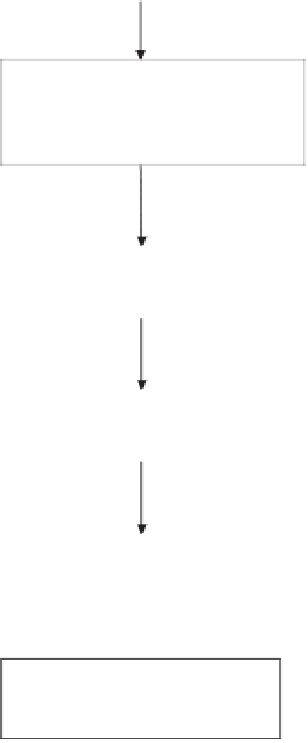Environmental Engineering Reference
In-Depth Information
Assemble tissue chemistry
data
Evaluate tissue chemistry data
using data quality objectives in
quality assurance project plan
Repeat necessary
components of sampling
program
DQOs
not met
DQOs
met
Compare tissue chemistry
data to contemporary
background levels
Tissues unlikely to be
contaminated relative to
background levels
BKGD
≤
> BKGD
Compare tissue chemistry
data to tissue residue
guidelines
Tissues unlikely to be
contaminated to hazardous
levels
< TRGs
> TRGs
Tissues contain elevated and
hazardous levels of
contaminants
Consider tissue chemistry
data with data on other
indicators
Fig. 7.7
Recommended procedure for assessing tissue chemistry data.
•
Do the concentrations of COPCs in sediments
exceed applicable SQGs (Fig. 7.1)?
•
Are sediments toxic relative to control and/or ref-
erence treatments (Fig. 7.3)?
•
Are communities of invertebrates or fi sh in the
fi eld degraded relative to reference conditions (Fig.
7.5)?
•
Is the health of fi sh compromised relative to refer-
ence conditions (Fig. 7.6)?
•
Do the concentrations of COPCs in tissues exceed
TRGs (Fig. 7.7)?
The answers to these questions will help to estab-
lish if metrics associated with each of these individ-
ual indicators are adversely affected at the test
stations relative to the reference stations. However,
it is also important to determine the relations among
individual indicators measured at the assessment
area. These relations can be evaluated most directly
by using scatter plots of the data to determine if there
is correspondence between pairs of indicators and
associated metrics measured on splits of individual
samples collected from stations in the assessment
area (for example sediment toxicity versus sediment
chemistry). Alternatively, the scatter plots can be
used to evaluate broader trends across geographic
reaches within the assessment area (for example fi sh
community status, or fi sh health versus sediment
chemistry). Comparisons of fi sh community status or
tissue chemistry of fi sh are often made across multi-
ple stations sampled for sediment chemistry to
account for the movements of fi sh within the assess-
ment area.
Statistical regression analyses can be used to deter-
mine if there are signifi cant relations between pairs















